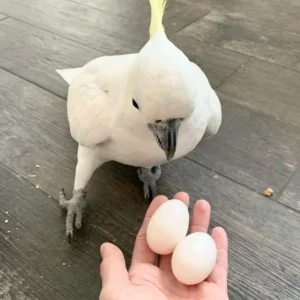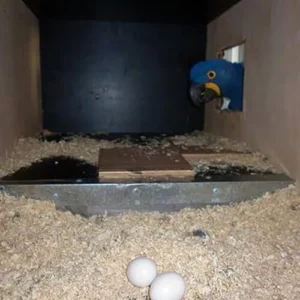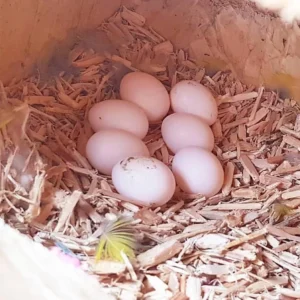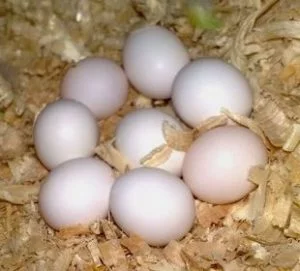AVAILABLE PARROT EGGS FOR SALE
- African Grey Parrot eggs
- Macaw Parrot eggs
- Cockatoos Parrot eggs
- Amazon Parrot eggs
- Mynah Parrot eggs
- Conures Parrot eggs
- Solomon Eclectus Parrot eggs.
- Senegal Parrot eggs
- Blue Crowned Conure Eggs For Sale
- Cinnamon Green Cheeked
- Conure Eggs For Sale
- Cockatiel Parrot Eggs for sale
- Crimson Bellied Conure eggs
- Dusky Headed Conure eggs For Sale
- Fertile African Grey Parrot Eggs
- Fertile Amazon Parrot Eggs
- Fertile Black Palm Cockatoo Parrot Eggs For Sale
- Fertile Blue and Gold Macaw Parrot Eggs
- Fertile Galah Cockatoo Parrot Eggs
- Fertile Goffin Cockatoo parrot Eggs for sale
- Fertile Greenwing Macaw Parrot Eggs
- Fertile Hyacinth Macaw Parrot Eggs
- Fertile Mollucan Cockatoo Parrot Eggs
- Fertile Scarlet Macaw Parrot Eggs
- Fertile Solomon Eclectus Parrot Eggs
- Fertile Umbrella Cockatoo Parrot Eggs
- Green Cheeked Conure For Sale
- INDIAN RINGNECK FOR SALE
- Jenday Conure For Sale
- Maroon Bellied Conure For Sale
- Nanday Conure For Sale
- African Grey Parrot For Sale
- Amazon Parrot Eggs For Sale
- Black Palm Cockatoo Parrot For Sale
- Blue and Gold Macaw Parrot For Sale
- Goffin Cockatoo parrot for sale
- Greenwing Macaw Parrot For Sale
- Hyacinth Macaw Parrot For Sale
- Scarlet Macaw Parrot For Sale
- Solomon Eclectus Parrot For Sale
- Sun Conure Parrot For Sale
- Umbrella Cockatoo parrot for sale
- Patagonian Conure For Sale
- Peach Fronted Conure For Sale
- Pineapple Green Cheeked Conure for sale
- Red Masked Conure For Sale
- Sun Conure eggs For Sale
Hatching Fertile Parrot eggs is a unique and exciting adventure in the world of breeding! With their beautiful colors and personalities, parrots are very popular exotic pets. This means that you want to make the most of your parrot egg hatching experience and get the best parrot egg hatch rates possible. Because of this, you will want to select a parrot egg incubator that is reliable like what we ship our eggs in. As with incubating any type of bird egg, you will want to ensure your parrot incubator is set to hatching temps and humidity and stabilized before placing your eggs inside. As a result to this, we will give you a call to set up your incubator once you receive your package the next day after placing your parrot eggs order.
Incubation Duration
Fertile Parrot egg incubation periods can vary by breed but are typically between 24-28 days. Some parrot breeds can hatch in as little as 18 days. Research your specific breed to find out how long your egg will need to be incubated. This article assumes a 24 day hatching cycle, so you may need to adjust based on your breed.

Incubation Temperature
Under natural conditions, the most important factor in successful parrot egg incubation is heat. As long as the egg gets enough of it and is not permitted to lose too much of it for too long a time, everything will be fine. This is true even though the actual temperature of the egg fluctuates drastically when the hen is off the nest. Hens that rarely leave their nest do not have a noticeably higher hatch rate than those that leave the nest at regular intervals. From this, it’s safe to assume that eggs have evolved to be less sensitive to temperature drops than to other more unnatural circumstances.One thing that a bird cannot do no matter how hard it may try is overheat a fertile parrot egg. This, of course, is possible in an incubator. Overheating is one of the things that a parrot egg is very sensitive to and can result in eventual death. Temperatures that have been used successfully range from 98.7 to 100 degrees Fahrenheit. About 99 degrees seems to work well for most types of parrot eggs.Of course, the best temperature for you to use will depend on many different factors. The most important of these factors is humidity.
Incubation Humidity
Humidity ranging between 38 and 52 percent have been used by different professionals under different circumstances. All have proven successful in the situations used. An egg should undergo a specific percentage of weight loss during the incubation period. This weight loss is achieved by the evaporation of water through the pores of the shell.Since increasing the incubation temperature can shorten the time period in which it takes a chick to hatch, there is less time for the required water loss to take place. If using these higher temperatures, the lower humidity should be used to allow sufficient water loss during the shortened time period. Conversely, if lower temperatures are used, the chick will take longer to hatch, and higher humidity should be used in order to keep too much evaporation from taking place.Under the same environmental circumstances, large eggs do better at lower humidity (38 to 45 percent), and smaller eggs do better at the higher range (46 to 52 percent).
Preparation
Each type of incubator will have their own process for set up. Most require the temperature to be set at least 24-48 hours before the eggs are placed inside so that humidity and temperature can be stabilized and adjusted as needed. Some recommend allowing the hen to sit on the eggs for the first two weeks, or waiting until she is completely done laying the eggs before removing them for incubation. This period is the most crucial when it comes to sensitivity to temperature and humidity of parrot eggs, and will help you to have the best possible parrot egg hatch rate.
Egg Turning
The next most important aspect of incubation is turning the eggs. Typically, turning parrot eggs 4-8 times is sufficient, although it has been a subject of debate with some suggesting turning up to every hour. However, parrot egg incubation research has shown increased hatch rates with fewer turns per day, in the 4-8 range.You will also have the option to turn by hand or to use a parrot egg turner. Many choose to use an egg turner because they are able to maintain a more stable environment in their incubator. It also allows them freedom of movement, especially if they are a hobby breeder who works outside the home. If you do choose to turn your parrot eggs by hand, you will want to make sure that you put a light mark on them so you can identify which way is up, and can quickly double check if you have turned all the eggs.
Determining Fertility
Candling parrot eggs is the easiest way to monitor growth of the embryo and determine if the eggs are fertile. It is important to pick the best eggs for incubation in order to have the best possible fertility rate. Candling parrot eggs can be done at any time, but you may not be able to see development until at least 7-10 days into the incubation process.
Hatching
The first sign that hatching is around the corner is when you see the egg “draw down.” This is when the air space in the egg enlarges. It will change from its normal round appearance to elliptical. One side of this now-elliptical air cell will extend down one side of the inside of the shell. The other side remains up near the top of the egg where it has always been–hence, the elliptical appearance. Some choose to wait until the first pip occurs to signal the end of incubation and the beginning of hatching. Since the incubation process is complete, the high humidity (the higher the better) does not interfere with evaporation but does make it less likely for the internal membrane to stick to the hatching chick. Chicks that get stuck to the membrane must be assisted out of the shell, or they will die trying to get out. Normal time lapse between major draw down and hatching is usually about three days.
Brooding
After hatching, you will need to brood your parrots. A good start for temperature selection for most tropical birds is 85 degrees F. This temperature is balmy enough to allow them to process food well and enjoy good health but not so warm that they are over active from the heat. Adjust brood box temperature up are down slightly as needed to achieve the goal of calm, healthy, fast-growing birds.
Summary
Hatching fertile parrot eggs can be a very rewarding and profitable pastime. You are encouraged to learn all that you can about your specific type of parrot in order to incubate for an appropriate amount of time. Good luck, and happy hatching experience!






Reviews
There are no reviews yet.